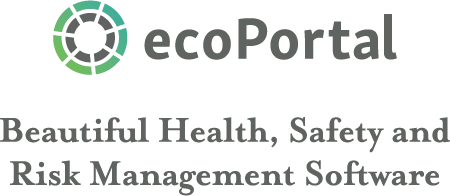
President's Update 15/4/20
By NZISM Secretary
15/04/2020
Kia ora koutou to all members and supporters of NZISM. Like me, most of you no doubt have experienced over the last few weeks the immense availability of webinars, information and social media content on any number of subjects related to COVID-19. Information on the effects on mental health, stress, how to be more resilient, working from home, leadership, essential services and PPE supply has filled our inboxes and social accounts. We have become familiar with different terms and ways of being, such as pivot, social distancing, physical distancing, staying in your bubble, the 2-metre rule, lockdown, work from home and queuing at the supermarket.
So much has been said and made available about COVID-19 over the last few weeks that I am not going to focus directly on the current situation we find ourselves in, although the focus of this message is related, that is leadership through a crisis. Situations of crisis really are the proving ground of leadership; think of some the high-profile crises we have experienced globally over years and consider the leader's response and presence during those events. Remember Rudi Giuliani’s response and presence during 9/11 compared to that of Scott Morrisons during the recent Aussie bush fires.
The following model, the "Crisis Clock", was developed by Peter Baines who, as a member of the Australian Police has led a number of forensic teams on body recovery missions to events around the world such as the Bali Bombings, Boxing Day Tsunami and the Japanese Tsunami, and was engaged to review the Saudi Arabian Government's response to the floods in the city of Jeddah.

The Crisis Clock explores our energy and that of our teams and describes the various stages of a crisis to help those in leadership roles determine at what stage they are at and what they need to do within that stage. The four stages of a crisis being (1) frantic, (2) controlled, (3) working (4) exit.
I don’t intend to go deeply into each stage of the Crisis Clock but hope to provide some key actions that those in leadership roles should do to manage their own energy and that of their teams.
Frantic
The frantic stage begins immediately that the event occurs, whether it’s an earthquake, a major explosion or a terrorist event. Three key things that leaders need to be mindful of if they are to survive the response that is required of them in a crisis during the frantic stage are:
- Look after your own wellness and that of your mates, make sure you put your own mask on.
- Accurately scope the project to ensure you can implement the appropriate response and identify the right resources, but don’t take too long, the Crisis Clock is always ticking.
- Communicate regularly and effectively – provide people with information, think about the way the Director General of Health is communicating with the New Zealand Public over COVID-19. When the time taken for your communication events starts getting shorter, this is an indication you may be moving into the next phase of the Crisis Clock.
Controlled
As you might imagine, this stage of the Crisis Clock is when your response is becoming under control. People are becoming confident in discharging their assigned roles. During the frantic emergency response stage work hours are likely to be extreme. It’s during this controlled stage that working hours start to reduce, there is even evidence of people being able to take a day off. Having workers in the team who are rested is not only beneficial for their wellbeing but also of great value to the response project as a whole. In this phase leaders need to:
- Move planning from short term response to longer term strategy. Make sure you have the right resources both technical and human, ensure you have people doing the right job based on their skill set.
- Process the scene. This is where we get to a stage where all the planning has been complete, we know what we need to do, we now need to get on and do it.
- Make sure your response team is productively employed. There will be plenty of people who will want to offer their help, and this is likely to be needed during the frantic stage, however as we move through the controlled stage some of the tasks they do may not be as meaningful, or they may just not have enough to do.
Working
Peter Baines describes this part of the Crisis Clock as the least productive, yet most challenging. It’s when leaders really need to step up and manage the energy of those working on the response. Some may have got to the point of losing enthusiasm for the job they are doing; the adrenaline has dissipated. To manage this drop in energy, leaders must:
- Acknowledge that there will be a drop in energy and keep connected with workers through regular communication. Make sure they are appropriately fed and hydrated and make sure they have had a chance to speak to their loved ones.
- Start to develop the exit strategy for the team. This is effectively where we are at now with COVID-19, although in this case we are having to start thinking about a return strategy on how we restart our businesses.
- Communicate with all interested parties. Engage with your workers, clients and other stakeholders detailing when your operation will be up and running again. Explain what you are doing to ensure the safe restart of your business.
Exit (or in this case return)
Returning to work after this period of time away from normal work is not really any different to what we experience when we return after our traditional holiday season in early January. And traditionally this is a time when we see increased levels of injury and death as people return to the workplace after a period of time being away.
- Implement the exit strategy - remember, your staff are likely to be at varying stages of emotional connection with the period of time we have had in lockdown. Some will have loved the time off, others will be stressed due to a loss or lessening of income, other family members may have lost their job, or family members may have been directly affected by the virus.
- In situations like the one Peter Baines has been involved in there may have been handovers when one team exits and another takes over. In this case I will replace handover with re-induction, make sure we reintroduce our staff to the operational and safety aspects of the job.
- Debrief and acknowledge - this is where we review the success or otherwise of the lockdown in respect of how the business and the staff dealt with it. Parts of your workforce may have been an essential service; review how did they coped with the situation. And of course, there needs to be an acknowledgement that this has been a difficult time for everyone, acknowledge that and show appreciation to your workers for the efforts they have put in.
Along with our response and leadership during and after the events one thing that isn’t any different than it should be under normal circumstances is the need to ensure a culture of kindness towards one another.
Ngā mihi mahana
Greg Dearsly
President

